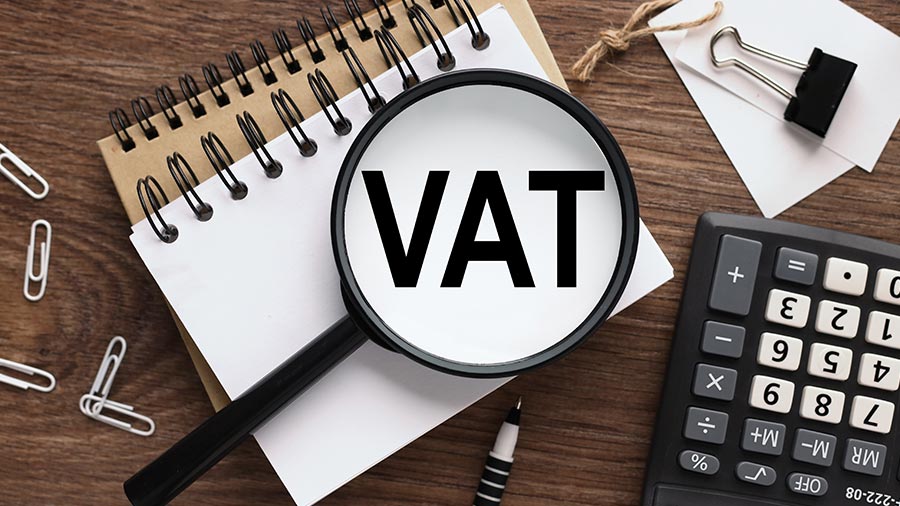The Value Added Tax (VAT) has been used worldwide since the 1950s, which is a buyer's tax and also applies to the sale of services, while the end customers bear the VAT, so it's called the consumption tax, what is the impact of VAT on business? This is what we will answer in our next article with more understanding of the VAT business mechanism, read on.

Understanding VAT
VAT is a sales tax imposed on the product during each step of manufacturing, processing and sale and VAT is paid by service and commodity producers, But they are ultimately imposed on consumers who buy services and goods when they pay for them. VAT, where VAT depends on consumption rather than income, in comparison with income tax VAT is calculated in the same way for each purchase VAT systems are used in more than 160 countries and are more common in the EU.
VAT is levied on gross profit at all points in the process of manufacturing, distribution and sales of the product, and taxes are assessed and collected at all stages compared to the sales tax system, where sales tax is paid by the customer only at the end of the supply chain.
For example, let's say that a cotton shirt was sold by the XYZ brand, once sold to the customer, it is responsible for paying sales tax on the 10% sales tax product.
How does VAT work?
VAT payable on any sale is a percentage of the sale price But the taxpayer is entitled to deduct all the tax previously paid, Double taxation is therefore avoided and VAT is paid only at each stage of production and distribution and in this way, since the final price of the product is equal to the total value added at each previous stage VAT ", the final VAT paid consists of the total VAT paid at each stage.
VAT Principles
VAT is a general tax that applies directly to purchases made by the final buyer of the product or service. If you have paid for products or services as part of your professional activity, you have also paid VAT, and can then generally deduct this VAT from those you collected from your customers on behalf of the public treasury.
A number is given to traders registered in VAT and they have to show customers VAT on invoices. In this way, the customer knows, if he is a registered trader, how much he can deduct in turn, the consumer knows how much tax he paid on the finished product, in this way the correct VAT is paid in stages, and to some extent the system is self-controlled.
What are the different VAT systems?
There are several types of VAT systems, when you create your business and depending on your sales volume, you should choose the plan that suits you:
- Basic Discount Scheme
- Streamlined Real System
-:Actual normal diet
What are the transactions subject to VAT?
As a general rule, all sales of products and services are subject to VAT, meaning all business operations (each time you invoice goods, products or services).
These operations are taxed if they relate to an economic activity and are carried out in exchange for payment, i.e. price, so VAT is charged to each transaction:
- Purchase (VAT, known as "deductible VAT", will be refunded)
- Sale (VAT is deducted from the buyer and paid to the public treasury, known as "VAT collected").
VAT is paid to the public treasury through the difference between VAT collected and VAT deductible, while only the remaining balance of the public treasury is paid or paid.
VAT benefits
VAT has a range of advantages, let's take a look at some of the key features of it:
Greater transparency
VAT helps promote increased tax transparency when successfully implemented, and therefore tax evasion becomes very difficult, especially since VAT can be considered a multi-stage production or consumption tax, and we apply to all the different stages at which the value of the product is increased during the manufacturing and distribution process.
Fixed income
Because VAT is a consumption tax, the revenue generated will be fixed, compared to other indirect taxes, VAT is easy to manage, as well as because VAT is charged in small instalments, consumers bear the minimum burden, it is also simpler and more uniform than traditional sales tax and has fewer compliance issues.
Preventing double taxation
VAT helps avoid the problem of double taxation, as one can benefit from the input tax credit paid from the VAT received.
Sound government expenditure
VAT allows governments to better plan their spending by identifying products that contribute more, and hence, VAT rates can be regulated to improve product demand and tax revenue collection.
VAT defects
Because VAT relies on a complete billing system, VAT application is expensive, and it is not easy to calculate VAT at every stage, this is not an easy task, and therefore VAT is difficult to understand.
Some also consider VAT to be of a retroactive nature, and therefore this will affect the poor more than the rich because they spend a greater proportion of their income, and VAT also requires the retention of all purchase and sales records which will increase the cost of compliance.
It is also worth mentioning that consumers must be aware of the successful implementation of VAT, otherwise tax neglect will be widespread through counterfeit bills.
Conclusion:
In short, the impact of VAT can be somewhat mitigated if the government excludes certain household goods or essential foodstuffs from VAT, or provides rebates or credits to low-income citizens to offset the effects of the tax.
other topics:
reference
1. << Everything new businesses need to know about VAT >>, specialityfoodmagazine.
2. << What are the major impacts of VAT>>, khaleejtimes.
2. << What are the major impacts of VAT>>, khaleejtimes.

Add New Comment